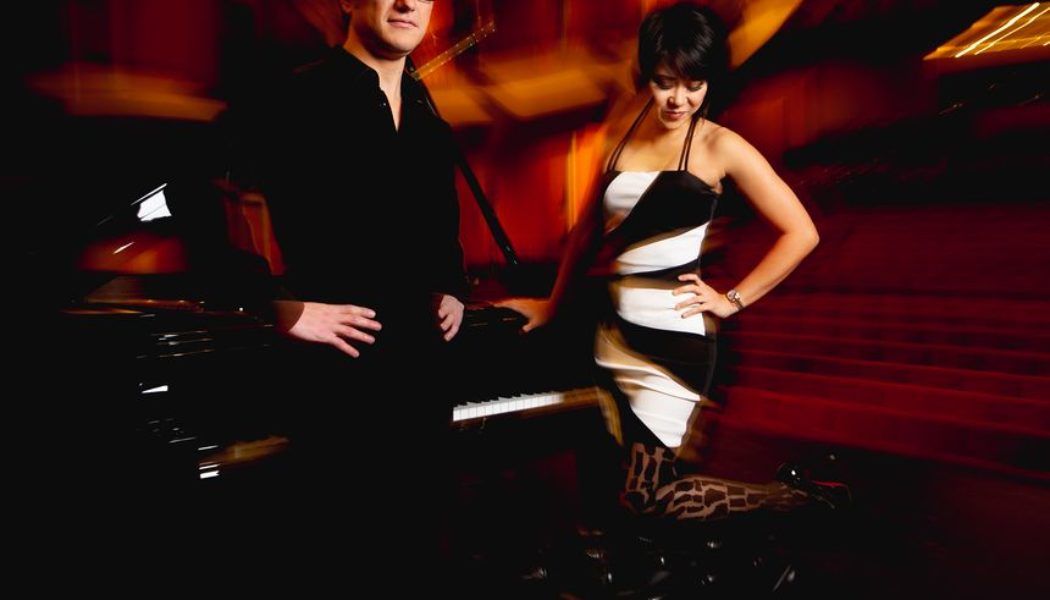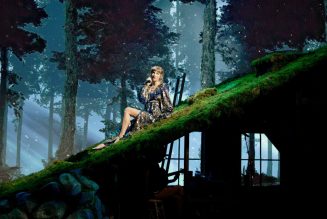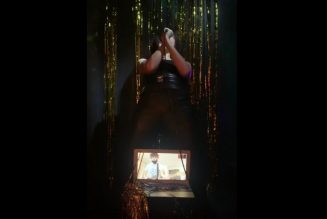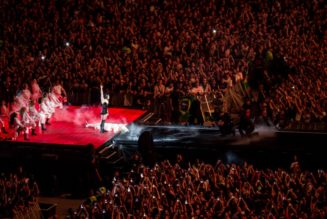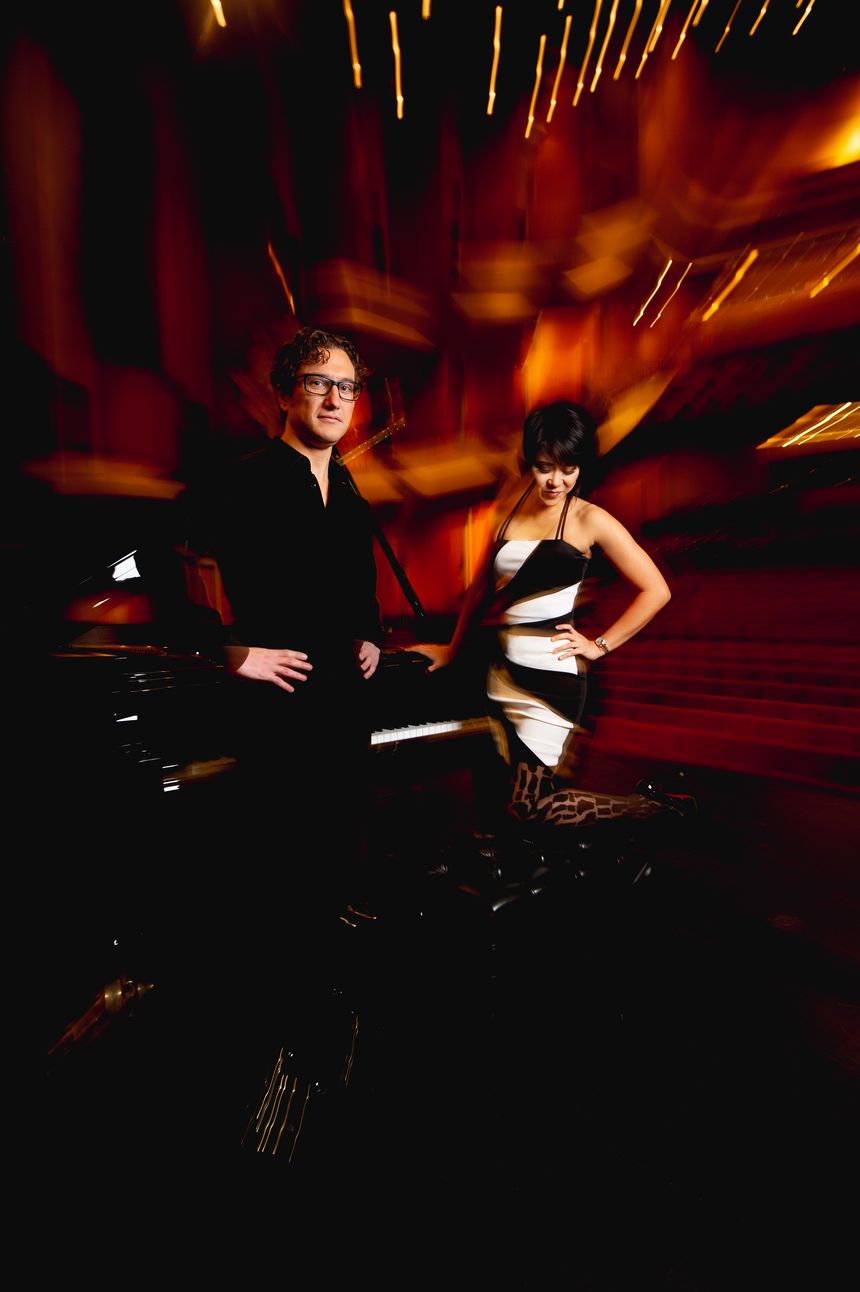
Teddy Abrams and Yuja Wang
Photo: O’Neil Arnold
There are undoubtedly still classical music listeners, and practitioners, who have bound themselves to a circumscribed approach to contemporary composition, but those who hold such attitudes are fast disappearing as younger musicians and listeners refuse to adhere to the old boundaries. These days, fluidity is chic: Composers glide freely among the grand gestures of past eras, the harmonic and rhythmic abstractions of modernism and the breadth of pop styles, and audiences who once resisted new music now find it both inviting and exciting. A generous sampling of this supercharged eclecticism can be heard on new recordings of works by Michael Tilson Thomas, Teddy Abrams, Alex Temple and Missy Mazzoli.
Mr. Thomas and Mr. Abrams, both better known as conductors than composers, wrote works with roots in jazz for the virtuoso pianist Yuja Wang. Though most closely associated with late 19th and early 20th century composers—particularly Russians—Ms. Wang released a fine John Adams disc in 2020, and gave the premiere of Magnus Lindberg’s Piano Concerto No. 3, last year; now “The American Project,” out now on Deutsche Grammophon, extends her ventures into new music.
Mr. Abrams, the music director of the Louisville Orchestra (and a classmate of Ms. Wang’s at the Curtis Institute of Music in Philadelphia), was commissioned to write her a companion piece to Gershwin’s “Rhapsody in Blue,” but ended up writing a 40-minute Piano Concerto (2022). Gershwin’s spirit certainly hovers over the piece, but it has company: Short stretches of Beethovenian piano writing, a fragment of the arching melody of “My Funny Valentine,” passing glimpses of salsa and Jerry Lee Lewis -style rock piano, and a passage that juxtaposes boogie-woogie bass with Prokofiev-like spikiness are all wrapped in an orchestration that evokes the jazz band in “Some Like It Hot.”
Mr. Abrams makes this parade of influences and references hang together coherently, with the busy piano line—written to Ms. Wang’s strengths, and played with her customary focus, fleetness and transparency—as both the work’s heart and its connective tissue. Mr. Thomas’s “You Come Here Often?” (2016), written as a solo encore, opens with a Minimalist figure that blossoms into jazz- and rock-tinged variations, alternately driven and introspective. In keeping with the work’s pickup-line title, the music pauses for a wolf whistle along the way.
***
The Chicago-based Spektral Quartet disbanded last June, but among its parting projects was Ms. Temple’s “Behind the Wallpaper” (2013-15), a song cycle for voice and string quartet, with the indie pop and jazz singer Julia Holter, recently released by New Amsterdam. Ms. Temple is a transgender composer, and her songs here touch on aspects of that transition, embracing raw vulnerability (“Purple Stain” describes a date in which a man flees after seeing her under a street light) as well as an ethereal strand of hopefulness (“Spires,” the finale, predicts a time when “the rising sun will reveal another world on top of our own . . . And you’ll understand that you have finally come home”).
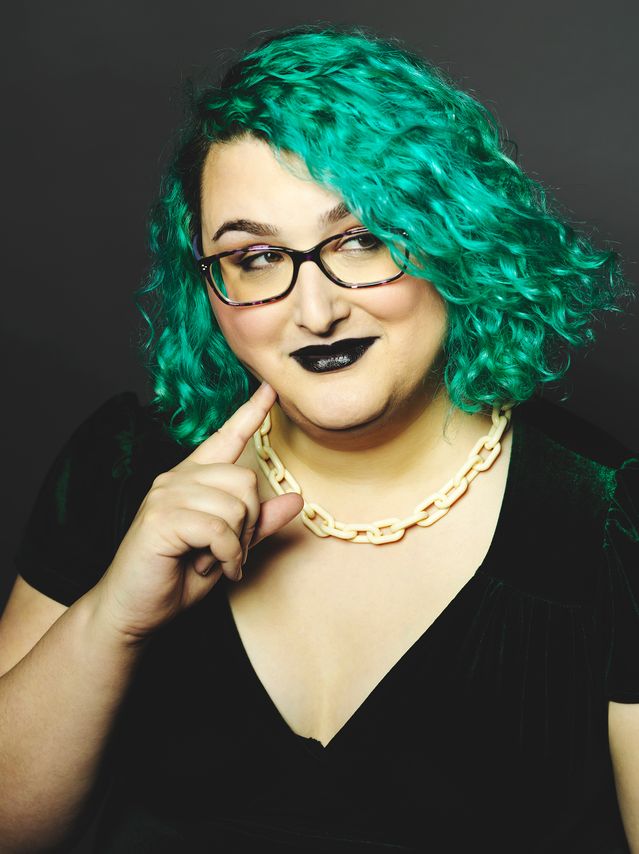
Alex Temple
Photo: Karjaka Studios
Ms. Holter’s singing is unencumbered by vibrato or other operatic conventions, giving the cycle a smooth veneer that calls to mind ambitious projects like David Ackles’s “American Gothic” (1972), an album of chamber pop that was ahead of its time. “Behind the Wallpaper,” by contrast, is thoroughly of its time, its graceful, lightly chromatic melodies and vivid scoring illuminating poems (by Ms. Temple) that suit the moment but are also emotionally timeless.
Ms. Temple’s string writing sometimes evokes past eras (Renaissance dance moves paint a party at an art gallery as a 17th-century masque; birdcalls akin to those in Beethoven’s “Pastorale” Symphony amplify a lyric about a breezy modern house). But overall, the score uses contemporary techniques to evoke an eerie tension that is resolved in a sense of graceful acceptance.
***
Ms. Mazzoli, early in her career, played electronic keyboards in Victoire, an ensemble that combined rock and classical instrumentation and played music that seemed to be both and neither. More recently, she has focused on symphonic works and opera; her sixth, “Lincoln in the Bardo,” based on the George Saunders novel, will be staged at the English National Opera in 2025 and at the Met in 2026. The Swedish Bis label has now released “Dark With Excessive Bright,” a collection of her recent works.
The title work, originally a 2018 double bass concerto, is presented here in arrangements—as a violin concerto and in a version for violin and string quintet, both completed in 2021 for the violinist Peter Herresthal, who plays them here.
Ms. Mazzoli’s disinclination to embrace a specific school of thought about tonality or style, and her imaginative approach to orchestration, have allowed her to create idiosyncratic sound worlds. In “Dark With Excessive Bright” (which takes its title from Milton’s description of God’s robes in “Paradise Lost”) the solo violin line moves between modal and chromatic passages, preening Romanticism and timbral effects, all shining through a dark, moody ensemble fabric. Mr. Herresthal brings an expressive heft and a richly varied tone in both versions. The chamber edition, which he plays with members of Arctic Philharmonic ( Tim Weiss conducting) has an appealing compactness, but it does not match the grandeur of the orchestral account by the Bergen Philharmonic Orchestra (led by James Gaffigan
).
Mr. Weiss and his Arctic players convey the sense of serene mystery that drives Ms. Mazzoli’s meditative “Sinfonia (for Orbiting Spheres)” (2013), and the dark intensity of her glissando-heavy “These Worlds in Us” (2006). Even more striking is their performance of the two-movement “Orpheus Undone” (2021), a prismatic, episodic score that ranges from moments of anxious chaos to passages in which Ms. Mazzoli channels the lushness of English pastoralism, all in the service of portraying Orpheus at the moment Eurydice is reclaimed by Hades.
But the album’s almost hidden highlight is “Vespers for Violin” (2014), a six-minute work tucked between orchestral scores. Here, Mr. Herresthal’s sweet-toned rendering of a soaring violin line, steeped in high Romanticism, is couched in a fabric of tactile electronic sounds.
It could be that composers are embracing stylistic fluidity as a way to capture an otherworldly spirit that is beyond the reach of more dogmatic approaches. Or maybe it’s a form of rebellion, an ornery disinclination to commit to the language of a single era, even their own. Either way, their approach is yielding works of intensity, beauty and power.
—Mr. Kozinn writes about music for the Journal.

Missy Mazzoli
Photo: Mats Backer
